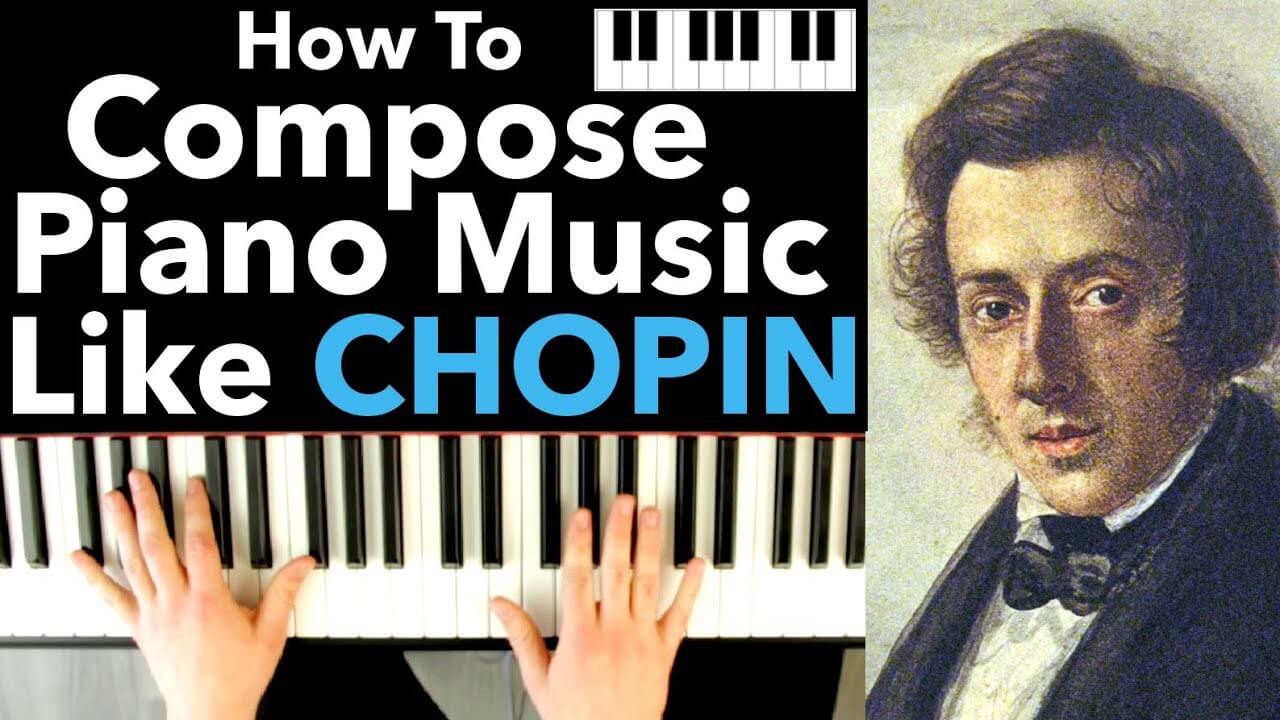Today you’ll learn how to compose piano music in the style of Chopin, my favorite composer. I’ve learned a lot of his pieces over the years and when I started composing my own songs I wanted them to have that dark, Chopin feel to them. Since I’ve played so many of his songs, I’ve figured out the little tricks and techniques he uses to get his sound.
To explain this to you, I’m going to use a song I actually wrote. What I’d advise you to do is check out the video above to see the demonstration as well.
The first thing you notice in a lot of Chopin pieces, is they don’t have a huge focus on the melody. Often the melody is very simple and often it’s more of a pattern than a melody. He focuses on the harmonic progression behind it. Also, often the melody or theme is repeated with harmonic variation underneath it.
You can see a demonstration of Chopin’s techniques in my song, “Renegade Power” where you’ll notice the repetition of the same pattern over and over, but of course we switch the chords up underneath. That first theme is played out over the first 8 to 16 measures. If you go to 23 seconds into the song, you’ll see our first variation – articulation.
Variation 1 – Articulation
For the first variation, our right hand is up an octave and our left hand is playing a staccato jump-based pattern. It’s the same thing as the original, but slightly different.
The reason theme and variations work so well stems from something mentioned in the book “This is Your Brain on Music.” Basically, your brain likes things that are similar to what you’ve heard before, but not too similar. This ensures it’s still fun and engaging. This is the same reason why people love cover songs.
Variation 2 – Harmonic
Going further into the theme and variation model, we have our first harmonic variation. This will include the same pattern with the right hand only this time it’s played over different chords with the left hand. You’ll see this starting at 49 seconds into the Renegade Power video.
It’s basically just a descending sequence.
If you don’t know music theory, don’t worry about it, but basically I’m just taking the harmonic chord progression and transposing it down through different key signatures.
Variation 3 – Harmonic (Major)
This variation starts at 1:08 in the video. This time we’re switching from a minor key to a major key. You’ll notice it’s great because the whole song has been in this minor sounding chord progression so far. Switching to a major key adds some brightness to the piece with the contrast between the keys.
Melody (No Theme)
At 1:32 in the song, for the first time, we’re dumping the theme. At this point, the audience’s ears are getting tired of theme so we’re going to switch it up. We do the melody at this point just to break up all those themes and variations.
After the melody section, we’re going right back to the theme, this time with another variation.
Variation 4 – Harmonic
We’re going to do another variation harmonically right after the melody. This starts at 1:57 in the song. It’s a very building theme and this is actually a very long section.
Variation 5 – Rhythmic (and Harmonic)
At 2:30 we’re going into a rhythmic and harmonic variation. As you’ll notice, all I’m doing is taking a pattern and playing it very similarly but this time in triplets. It’s basically the same pattern.
Another thing I want to mention is that this is one of my favorite ways to build, where it starts soft and gets louder and louder building up into the climax of the piece.
The reason this build works so well is because the right hand slowly moves to the right and the left hand slowly moves to the left, building over the course of 8 to 16 measures. This is something Chopin does ALL THE TIME!
The Original Theme
At 2:52, we end with the exact same theme as the beginning. This way, our themes bookend the song.
So we have a theme, a bunch of variations in the middle, and then the theme again at the end.
Be sure to check out the video demonstration for this and if you want a few cheat sheets for the music theory as well as a few other strategies, take a look at my free Become a Piano Superhuman Course.

